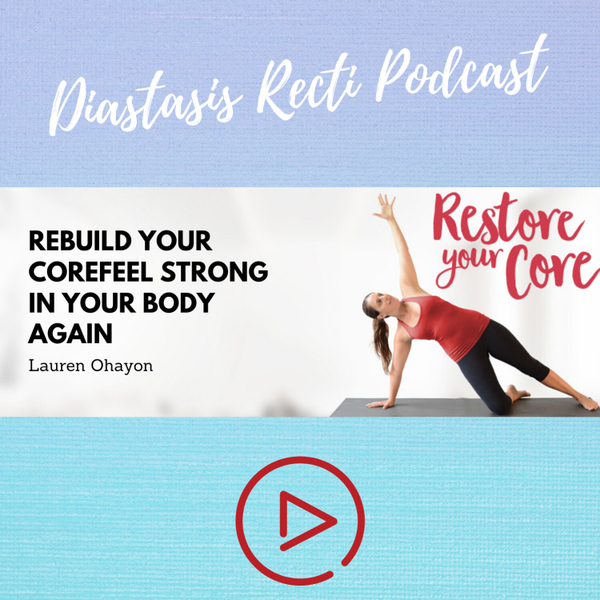
Self Testing Diastasis Recti
- S1E11
- 02:58
- September 15th 2020
How to Test for Diastasis Recti?
Believing you may have a diastasis recti can be a worrisome / frustrating experience. However, there is an abundance of information regarding diastasis recti recovery. We at Restore Your Core have designed a program specifically for women who are suffering from diastasis recti or other abdominal/pelvic floor issues.
What is Diastasis Recti?
Diastasis recti is the stretching or separation of the rectus abdominis (6 pack) muscles caused by the thinning of the linea alba (midline connective tissue). Diastasis recti separation leaves your abdominal organs unsupported, and if severe, can expose your digestive organs creating a stomach bulge.
This separation can range from being isolated above the belly button, within the belly button, and below the belly button sitting above the pubic bone. In some cases, the separation emcompasses the entire mid section of the core.
In both men and women, this gap can be created in the midline of your belly anywhere from the pubic bone to the base of your ribcage. During a crunch or sit-up, where one would normally feel tension and closure, there is a space in between.
What Does it Look Like?
Diastasis recti looks different from person to person. Although in some cases the symptoms can be painful and more present, in some people they aren’t noticeable at all. Below I address the most common and present symptoms you should be aware of in determining whether or not you may have a diastasis recti.
Abdominal Bulge
An abdominal bulge is not always an indication of a diastasis recti, yet, it can be a symptom.
This bulge, or stomach “pooch,” occurs when the abdominal organs become unsupported by the rectus abdominis muscles. This can appear as a cone shape or ridge above and within the area located close to the belly button. However, depending on where the diastasis recti has become isolated, the bulge can range from above the belly button, on the belly button (causing the belly button to flatten), or below the belly button just above the pubic bone.
Testing for Diastasis Recti
A self-assessment can be performed as follows:
Lie on your back in a comfortable position. Bend your knees and place your feet flat on the floor.
Place one hand on the midline of your core with your fingers pointing straight down on your abs.
If you need support for your head, place your other hand under your head and neck for support. Slowly lift your head and add minimal pressure to your fingers placed on your core. With no diastasis recti, there is the feeling of a toned wall as you lift your head up. If you feel a gap, or your fingers sink into your core, you likely have diastasis recti. In very obvious cases, you can feel the sides of your core muscles in between that gap on the left and right sides.
Repeat the process for the areas just above your belly button and below your belly button to determine whether or not the diastasis recti is isolated or in your core as a whole.
Restore Your Core: Diastasis Recti and Pelvic Floor Talks
The Restore Your Core podcast is all about health and fitness for those struggling with Diastasis Recti or Pelvic Floor issues.
Lauren Ohayon makes videos, runs a thriving facebook group, and creates blogs that help people to feel better and reclaim their healthy bodies.
https://restoreyourcore.com/learn/diastasis-recti/
If you're too busy to read the blog then feel free to listen to the podcast! We hope to be a part of your core restoration journey.